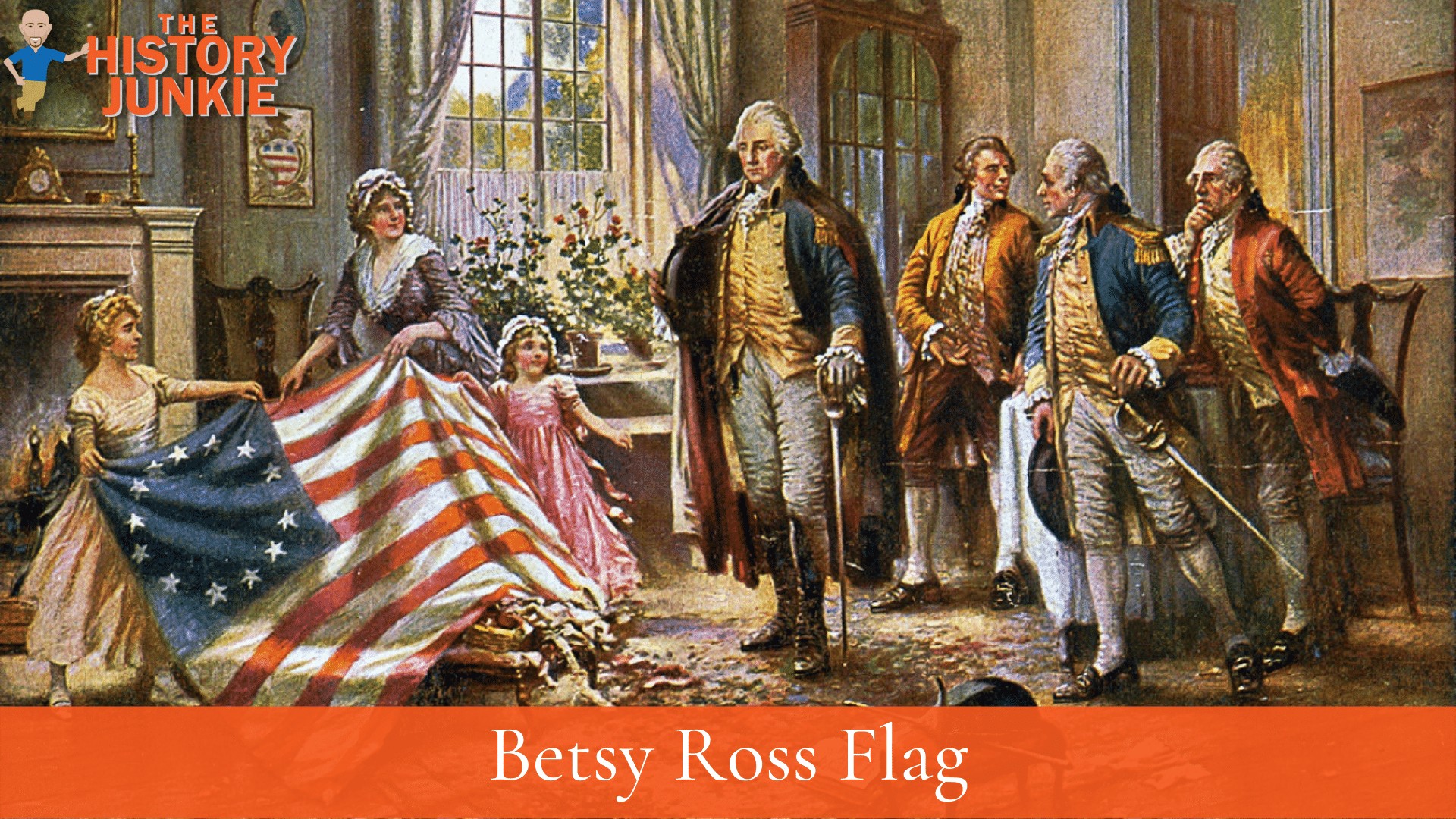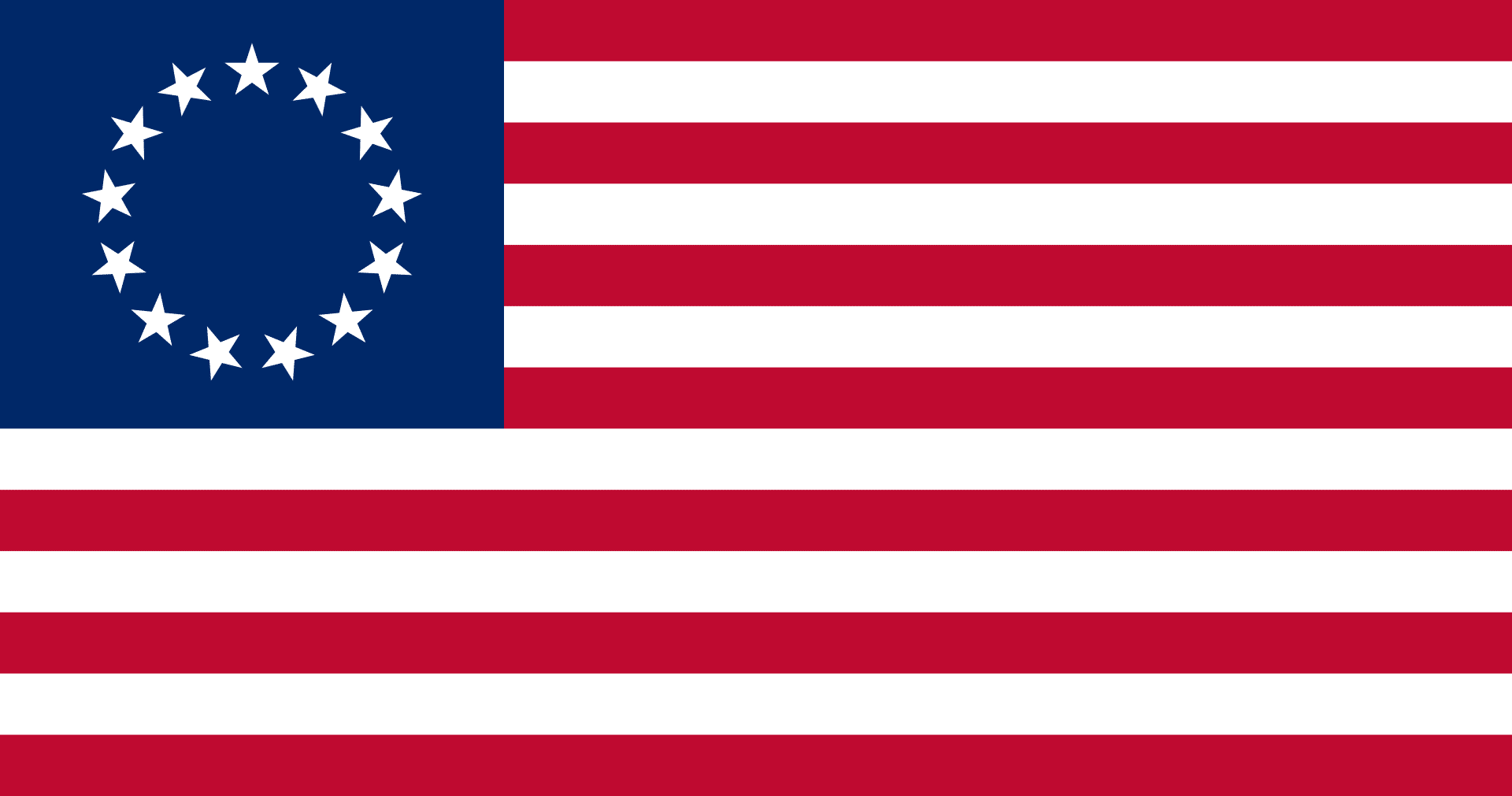The flag that is known as the Betsy Ross Flag has thirteen white stars on a blue background (canton) and thirteen alternating red and white striped fields.

Even though Betsy Ross has been attributed as the seamstress of the official first US Flag, some historians believe this to be more legend than fact.
According to some, she never claimed to have designed the first American flag. But she did say that she suggested the five-pointed, rather than the six-pointed, star design.
Others say that she was the seamstress, including her daughter Rachel Fletcher, who signed a sworn affidavit that states her mother did make the first Star-Spangled Banner.
Betsy's grandson - William J. Canby - submitted a paper to the Historical Society of Pennsylvania, which included stories he had heard from his Grandmother and other family members.
Mr. Canby said that three men came to her upholstery shop in Philadelphia in June of 1776. These men were George Washington (who was then head of the Continental Army), George Ross (Betsy's late husband's uncle), and Robert Morris (a wealthy landowner).
The men said that they were a committee of Congress and asked Betsy if she would make a flag from a drawing they had made.
Detractors say that there are no records showing that the Continental Congress had a committee to design the national flag in 1776.
The first documented meeting about a national flag didn't happen until the Flag Resolution of 1777.
Others say that George Ross was unlikely to be on a Congressional committee because he was not a member of Congress in June 1776.

Betsy Ross Flag Significance
The Betsy Ross design, with its easily identifiable circle of stars, has long been regarded as a symbol of the American Revolution and the young Republic.
William J. Canby's recounting of the event appealed to Americans eager for stories about the revolution and its heroines. Betsy Ross was promoted as a patriotic role model for young girls and a symbol of women's contributions to American history.
The Betsy Ross flag design is featured prominently in a number of post-Revolutionary paintings about the war, such as General George Washington at Trenton (1792) and Washington Crossing the Delaware (1851).
During the United States centennial, not long after the presentation by William Canby, the Betsy Ross design became a highly produced and popular flag.
The traditional backdrop at the quadrennial United States presidential inaugurations uses a large Betsy Ross flag and the modern US flag to represent the history of the nation.
Since the 1980s, this display also includes a US flag design symbolizing the year the president's home state was admitted to the union.
During the inaugurations of Donald Trump and Joe Biden, the Betsy Ross flag was placed next to another 13-star Hopkinson flag designed to represent the states of New York and Delaware, respectively.
The circle of 13 stars, which defines the Betsy Ross design, is found on two state flags: the Flag of Rhode Island and the Flag of Indiana.
The Flag of Missouri features a similar circle of 24 stars since it was admitted as the 24th state. The United States Foreign Service flag also features a circle of 13 stars.
Since 1963, the Philadelphia 76ers have used the distinctive ring of 13 5-pointed stars in their team logo as a reference to Philadelphia as the first United States capital, where the Declaration of Independence was signed, and where Betsy Ross worked.
